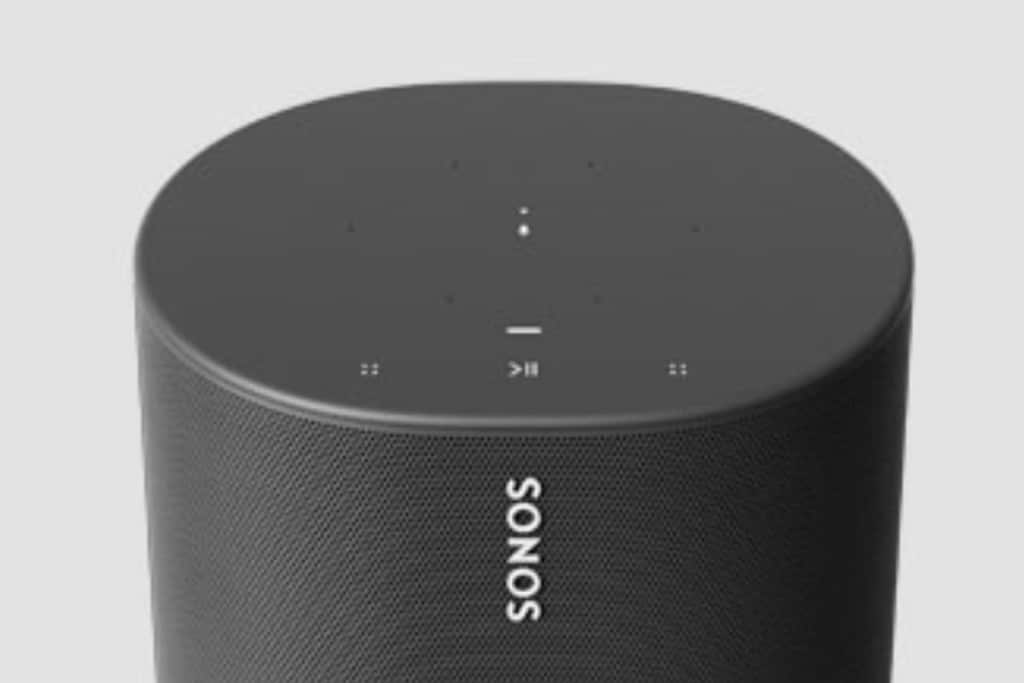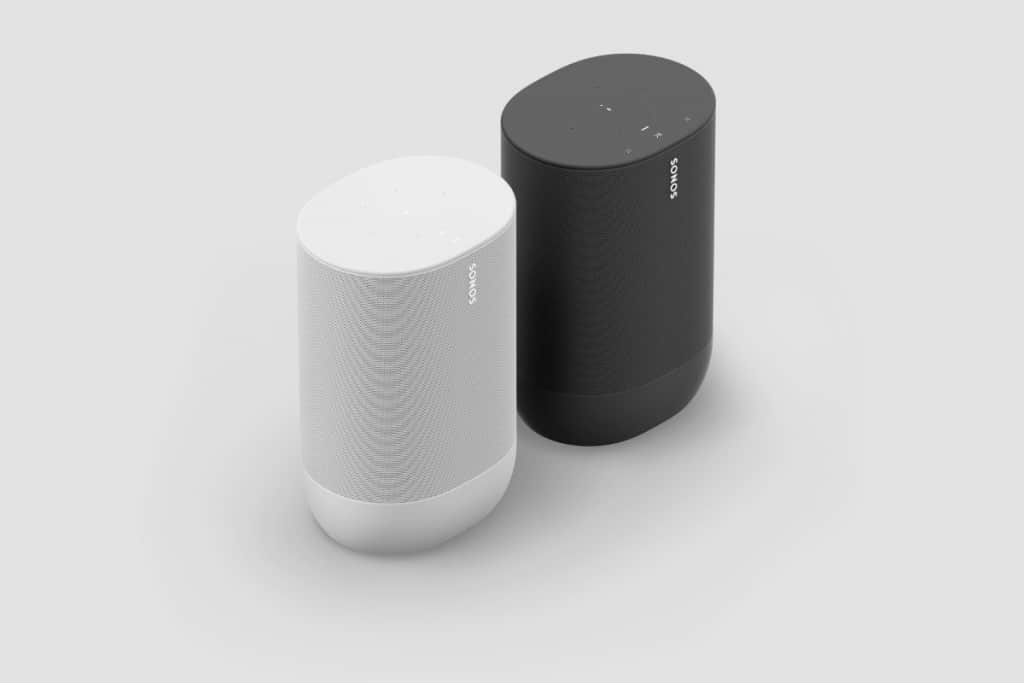Sonos Move Buttons Explained in Seconds!
Sonos, the luxury speaker manufacturer, packs a lot of features into their products. This can be especially fruitful for those that stay hip to new tech innovations, but it can be especially confusing for people who are using the Sonos lineup as an introduction to smart speakers. Minimizing interface is a current trend in tech, and this means doing more with less. For example, the Sonos Move only has four buttons, and these buttons can handle dozens of different commands.

Table of Contents
- What do the buttons mean on the Sonos Move?
- Sonos Move Buttons Explained
- Other Sonos Move Tips and Tricks
- Water Resistance
- Stereo Output
- Different EQ for Different Rooms
- Disable the Swipe Function on Sonos Move
What do the buttons mean on the Sonos Move?
The Sonos Move has a play-pause button, it has two volume buttons that act as fast forward and rewind too, on the back it has the Bluetooth button, and it has the power button on the back as well. Some of the buttons are even given additional functions by using swipe detection.
Continue reading to learn more about how to control the Sonos Move and what each button can and cannot do.
Sonos Move Buttons Explained
The play-pause button is simple to its name. It’s only used to play or pause the audio. It is synced with whatever device you connect it to too. This means it not only pauses and plays audio through the speaker, but it can pause-play on the actual device it’s connected to too.
This means you won’t have to pick up your phone if you just want to pause for a few seconds. The play-pause button also has one more surprising feature. If you double-tap the button quick enough, you can get the music to skip to the next track.
On the other hand, the volume buttons are unique. The two buttons are located on each size of the play-pause button, and they double as fast forward and rewind. To activate the volume controls, the button is pressed like you would any other button.
To activate fast forward and rewind, the user has to swipe in the direction they want the playback to go. It’s a unique feature that’s innovative and intuitive.
The Move stands out from most of the Sonos lineup by supporting Bluetooth. Most of the Sonos lineup specifically relies on Wi-Fi for audio playback.
The Move and the Roam are designed to be taken on the go, so Sonos has included Bluetooth on these devices. That’s what the center button on the back is for.
You’ll still have to complete initialize setup via Wi-Fi, but once the setup is finished, the Bluetooth button can be used to pair the Sonos Move with another device.
Above the Bluetooth button is the power-sleep button.

A single, quick press will put the device to sleep mode, and a longer press will turn the Sonos Move completely off. Sleep mode is useful because you can wake the device from your smartphone. On the other hand, sleep mode can drain the battery over time.
This means your device might be dead the next time you want to use it if you didn’t power it all the way down.
Finally, the Sonos Move’s LED indicator light at the base of the device can alert you when the speaker is in pairing mode or in need of a recharge.
Other Sonos Move Tips and Tricks
Sonos has the strongest all-home offerings for a reason. The company has created a seamless experience via the S2 controller app that allows speakers to be controlled individually, controlled as a group, and even paired for stereo and surround sound output.
This means it’s going to take some time to get used to your new speaker ecosystem. There are tons of things you can do with the devices that isn’t advertised directly. Continue reading to discover more possibilities and some useful tips for your Sonos Move.
Water Resistance
The Sonos Move is meant to be taken on the go. A wireless speaker wouldn’t be very mobile if it couldn’t hold up to the elements.
Luckily, the Sonos Move has an IP rating of IP56, meaning it can survive basic splashes, exposure to moderate dust, and even the occasional drop in water.
Be quick though – the Sonos Move doesn’t float, so you’ll have limited time to get it if it’s dropped in the pool.
Stereo Output
Many of Sonos products are capable of stereo pairing if you have multiple of the same model. The Move, due to its mobile function, it’s preferable for stereo playback, but the option is still there.
Due to the wide soundstage found on the Move, you might notice some discrepancies in stereo.
The Move is designed to reach a wide audience rather than focus on one point, but if you still want to pair your Moves for stereo just follow these steps:
- Open your Sonos Controller App
- Click the “Settings” tab
- Select “System”
- Find one of your speakers under the “Products” label
- Select “Set Up Stereo Pair” or “Create Stereo Pair,” depending on which Controller app you have
- The app will conveniently walk you through the remainder of the steps
Different EQ for Different Rooms
You’ve probably already noticed that you can name your Sonos speakers according to which room they’re in, but you can also change the settings for each individual speaker even when they’re in a group.
Follow these steps to change the volume, EQ, and other settings for individual speakers of the same group:
- Open the Sonos Controller app
- Navigate to “System”
- Click on “Select Room”
- You’ll find a list of all of your rooms here
- Find the option for EQ
- Adjust your volume and EQ for each individual room to your liking
Disable the Swipe Function on Sonos Move
The swipe function is great, especially if you won’t be holding or touching your speaker all that often. You can imagine how this would be a problem with a portable speaker like the Move.
With fast forward-rewind functionality built into a swipe button, it’s easy to accidentally activate.
Luckily, the swipe function can be turned off completely. Sonos hasn’t made it easy to do though.
You’ll have to pair your speaker to your device before turning it off. Now, hold down the pair button for 10 seconds. Next, quickly press the pair button one more time to turn off the swiping function.